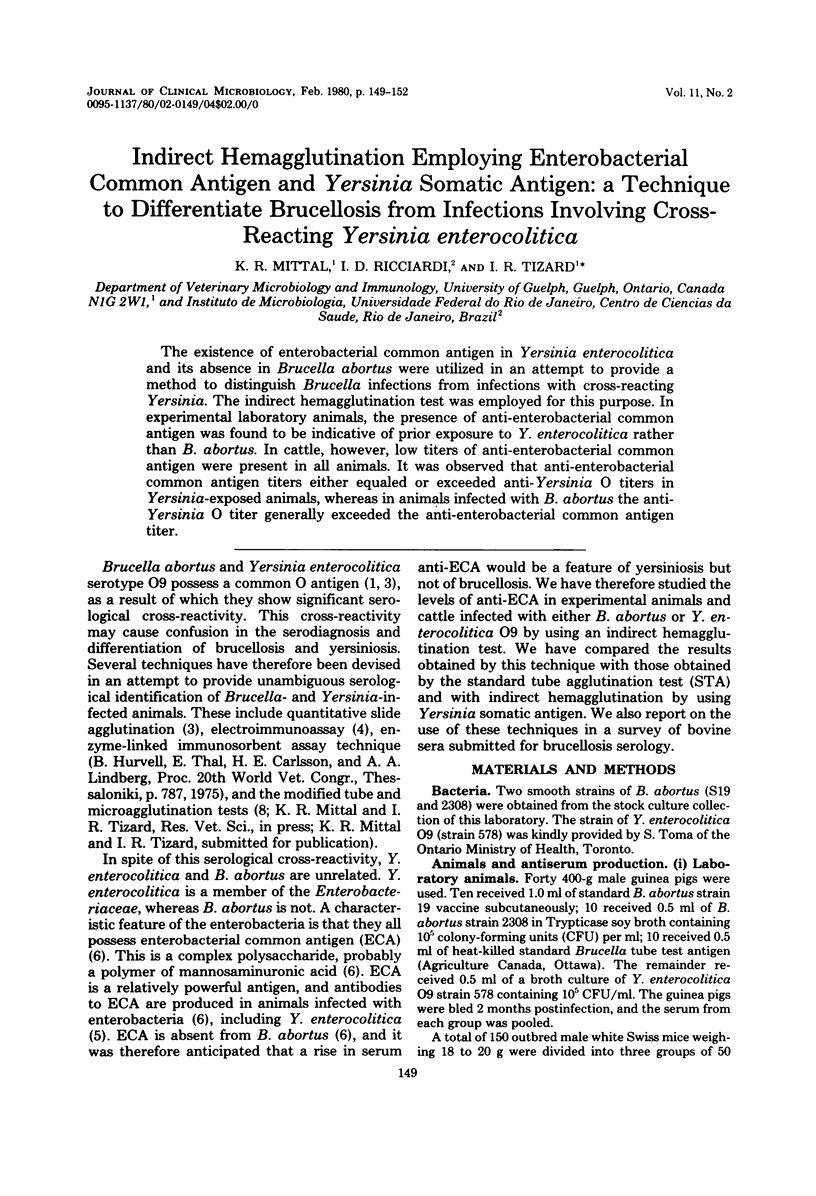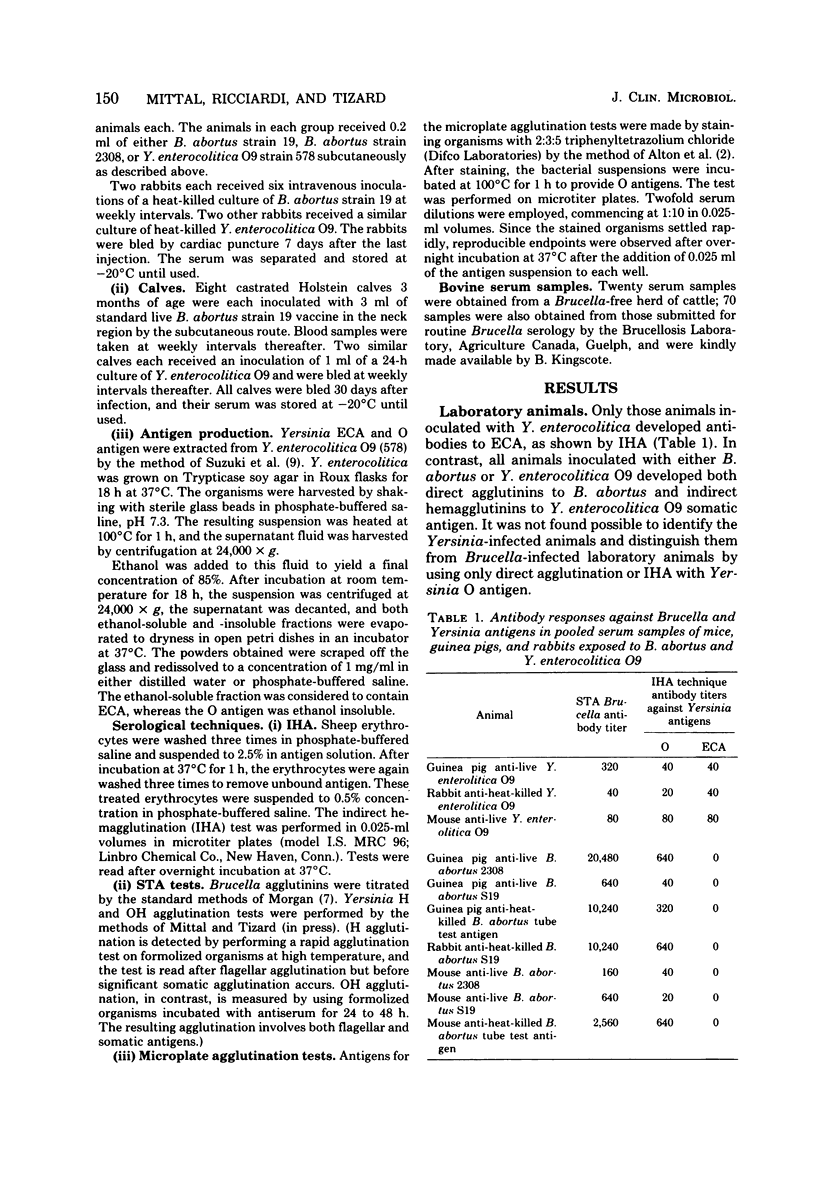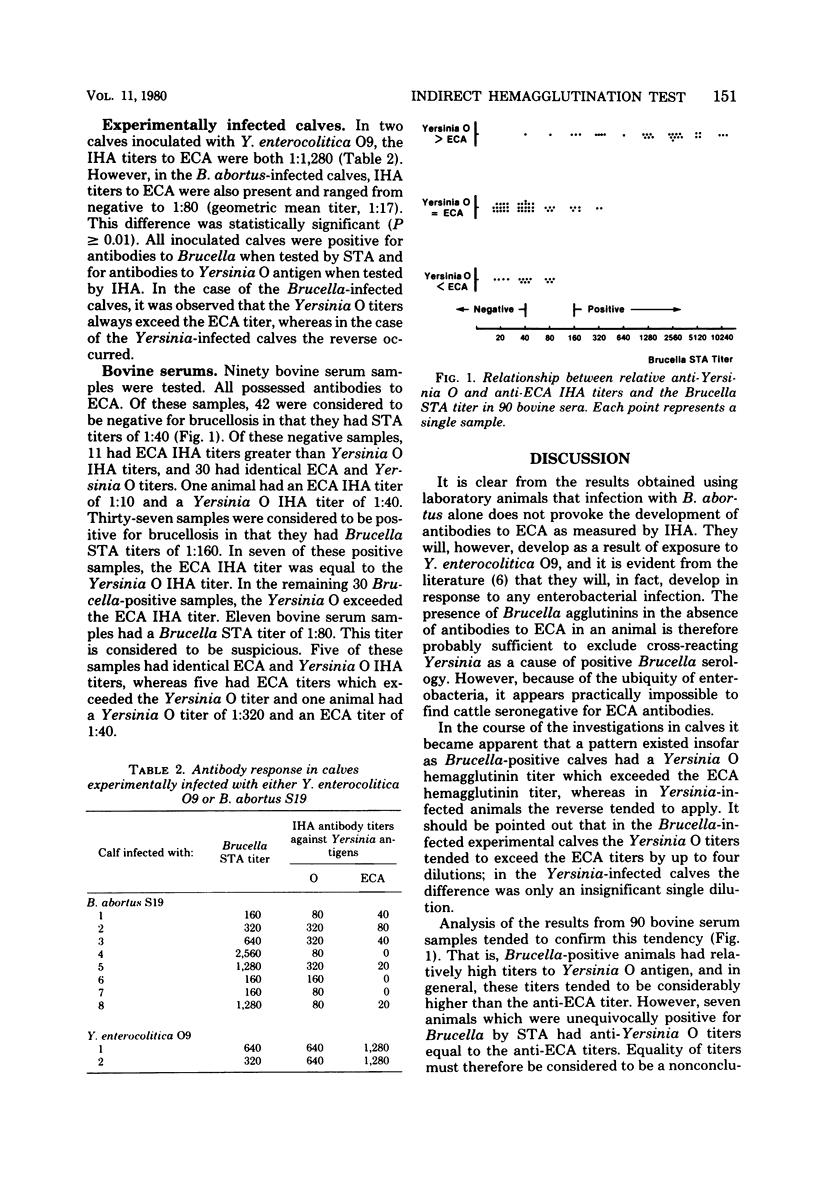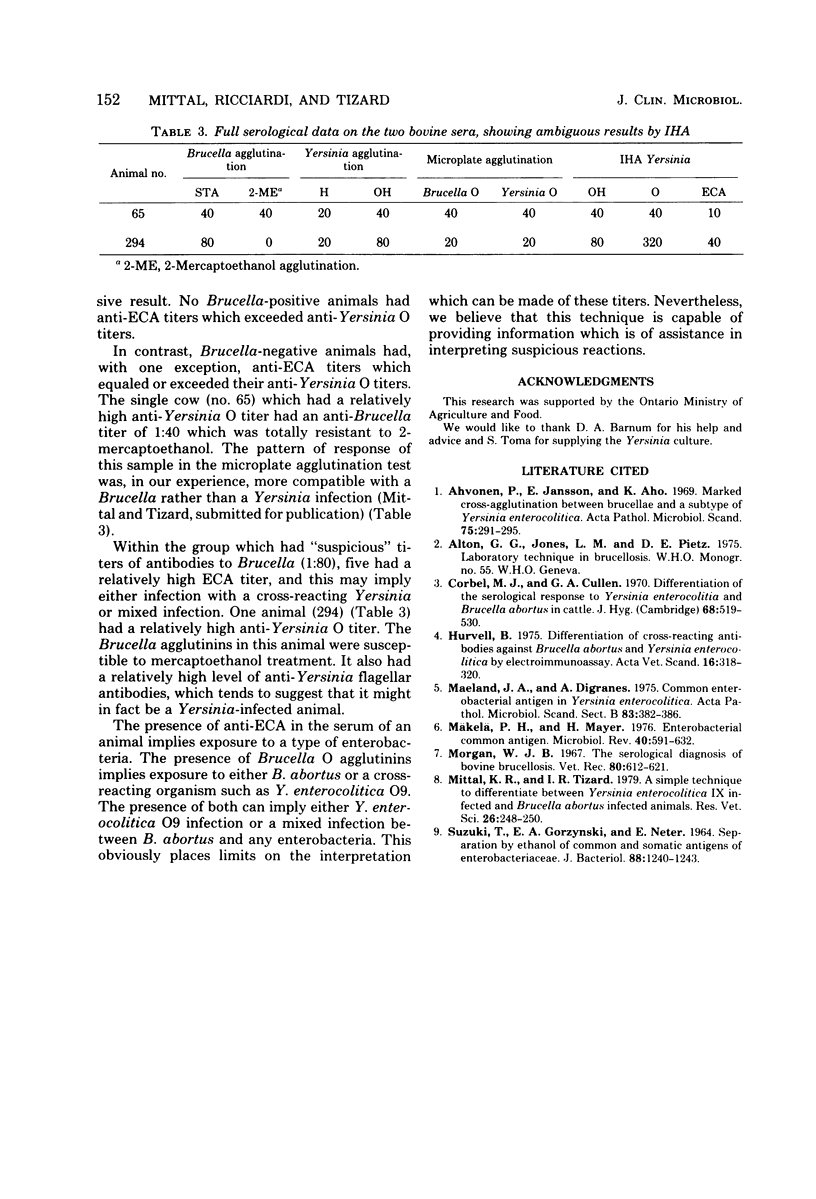Abstract
The existence of enterobacterial common antigen in Yersinia enterocolitica and its absence in Brucella abortus were utilized in an attempt to provide a method to distinguish Brucella infections from infections with cross-reacting Yersinia. The indirect hemagglutination test was employed for this purpose. In experimental laboratory animals, the presence of anti-enterobacterial common antigen was found to be indicative of prior exposure to Y. enterocolitica rather than B. abortus. In cattle, however, low titers of anti-enterobacterial common antigen were present in all animals. It was observed that anti-enterobacterial common antigen titers either equaled or exceeded anti-Yersinia O titers in Yersinia-exposed animals, whereas in animals infected with B. abortus the anti-Yersinia O titer generally exceeded the anti-enterobacterial common antigen titer.
Full text
PDF



Selected References
These references are in PubMed. This may not be the complete list of references from this article.
- Ahvonen P., Jansson E., Aho K. Marked cross-agglutination between Brucellae and a subtype of Yersinia enterocolitica. Acta Pathol Microbiol Scand. 1969;75(2):291–295. [PubMed] [Google Scholar]
- Corbel M. J., Cullen G. A. Differentiation of the serologicl response to Yersinia enterocolitica and Brucella abortus in cattle. J Hyg (Lond) 1970 Dec;68(4):519–530. doi: 10.1017/s0022172400042455. [DOI] [PMC free article] [PubMed] [Google Scholar]
- Hurvell B. Differentiation of cross-reacting antibodies against brucella abortus and yersinia enterocolitica by electroimmuno assay. Acta Vet Scand. 1975;16(2):318–320. doi: 10.1186/BF03546687. [DOI] [PMC free article] [PubMed] [Google Scholar]
- Maeland J. A., Digranes A. Common enterobacterial antigen in Yersinia enterocolitica. Acta Pathol Microbiol Scand B. 1975 Aug;83(4):382–386. doi: 10.1111/j.1699-0463.1975.tb00116.x. [DOI] [PubMed] [Google Scholar]
- Mittal K. R., Tizard I. R. A simple technique to differentiate between animals infected with Yersinia enterocolitica IX and those infected with Brucella abortus. Res Vet Sci. 1979 Mar;26(2):248–250. [PubMed] [Google Scholar]
- Morgan W. J. The serological diagnosis of bovine brucellosis. Vet Rec. 1967 May 27;80(21):612–620. doi: 10.1136/vr.80.21.612. [DOI] [PubMed] [Google Scholar]
- Mäkelä P. H., Mayer H. Enterobacterial common antigen. Bacteriol Rev. 1976 Sep;40(3):591–632. doi: 10.1128/br.40.3.591-632.1976. [DOI] [PMC free article] [PubMed] [Google Scholar]
- SUZUKI T., GORZYNSKI E. A., NETER E. SEPARATION BY ETHANOL OF COMMON AND SOMATIC ANTIGENS OF ENTEROBACTERIACEAE. J Bacteriol. 1964 Nov;88:1240–1243. doi: 10.1128/jb.88.5.1240-1243.1964. [DOI] [PMC free article] [PubMed] [Google Scholar]


